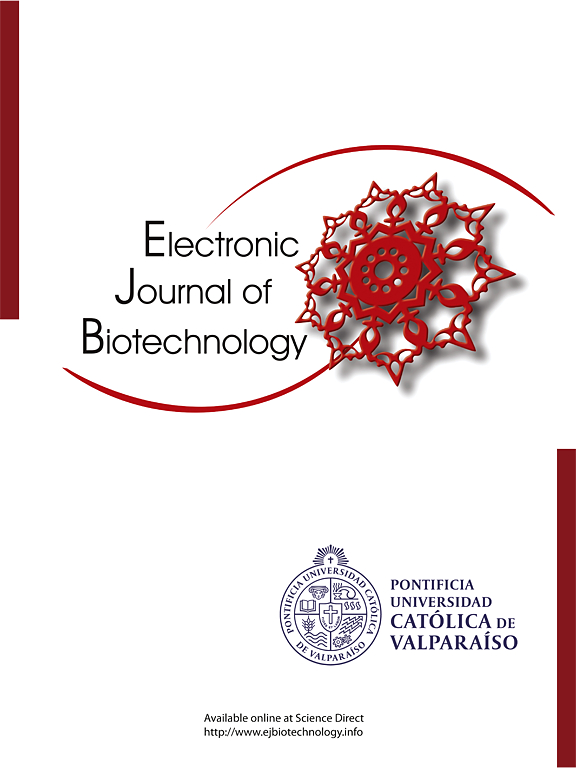The evolution of isothermal amplification technology: A bibliometric study (2013–2022)
IF 2.5
4区 生物学
Q3 BIOTECHNOLOGY & APPLIED MICROBIOLOGY
引用次数: 0
Abstract
Background
Isothermal amplification is a nucleic acid amplification technology (NAAT) that has contributed significantly to molecular diagnostics. The combination of NAAT with a suitable detection platform has improved sensitivity and specificity and enabled rapid disease diagnosis. A total of 5388 articles relating to isothermal amplification technology published from 2013 to 2022 were identified in the Web of Science Core Collection (WoSCC) database and subsequently analyzed with CiteSpace 5.7.R1 software.
Results
The number of published articles on isothermal amplification technology steadily increased between 2013 and 2022. The disciplines included Chemistry, Science Technology Other Topics, Biotechnology Applied Microbiology, Microbiology, and Biochemistry Molecular Biology. The countries with the highest number of published articles were China, the United States, and Japan while the institutions with the highest number of published articles were the Chinese Academy of Sciences, the Chinese Academy of Agricultural Sciences, and Mahidol University. The high-frequency keywords included rapid detection, sensitivity, pathogen, Escherichia coli, probe, primer, and expression. Over recent years, most research studies concerning isothermal amplification focused on its advantages, improvements, and applications. RCA, LAMP, RPA, and Cas technologies appeared sequentially from 2013 onward. The keyword “LAMP” exhibited the highest frequency (1222 times).
Conclusions
Our study described the research trends and the status of isothermal amplification technology over the past decade, providing guidance for future research in this field.
How to cite: Zhu H, Miao Z, Yuan J, et al. The evolution of isothermal amplification technology: A bibliometric study (2013–2022). Electron J Biotechnol 2025;76. https://doi.org/10.1016/j.ejbt.2025.03.003.

等温扩增技术的演变:文献计量学研究(2013-2022)
二温扩增是一种核酸扩增技术,在分子诊断中有着重要的作用。NAAT与合适的检测平台结合,提高了敏感性和特异性,实现了疾病的快速诊断。从Web of Science Core Collection (WoSCC)数据库中检索2013 - 2022年间发表的5388篇与等温扩增技术相关的文献,并利用CiteSpace 5.7进行分析。R1软件。结果2013 - 2022年,等温扩增技术相关论文数量稳步增长。学科包括化学、科学技术及其他课题、生物科技应用微生物学、微生物学及生物化学分子生物学。发表论文数量最多的国家是中国、美国和日本,而发表论文数量最多的机构是中国科学院、中国农业科学院和玛希隆大学。高频关键词包括快速检测、敏感性、病原菌、大肠杆菌、探针、引物、表达。近年来,关于等温扩增的研究主要集中在其优点、改进和应用上。从2013年开始,RCA、LAMP、RPA和Cas技术相继出现。关键词“LAMP”出现频率最高(1222次)。结论本研究描述了近十年来等温扩增技术的研究趋势和现状,为今后该领域的研究提供指导。引用方式:朱华,苗志,袁军,等。等温扩增技术的演变:文献计量学研究(2013-2022)。中国生物医学工程学报(英文版);2009;16。https://doi.org/10.1016/j.ejbt.2025.03.003。
本文章由计算机程序翻译,如有差异,请以英文原文为准。
求助全文
约1分钟内获得全文
求助全文
来源期刊

Electronic Journal of Biotechnology
工程技术-生物工程与应用微生物
CiteScore
5.60
自引率
0.00%
发文量
50
审稿时长
2 months
期刊介绍:
Electronic Journal of Biotechnology is an international scientific electronic journal, which publishes papers from all areas related to Biotechnology. It covers from molecular biology and the chemistry of biological processes to aquatic and earth environmental aspects, computational applications, policy and ethical issues directly related to Biotechnology.
The journal provides an effective way to publish research and review articles and short communications, video material, animation sequences and 3D are also accepted to support and enhance articles. The articles will be examined by a scientific committee and anonymous evaluators and published every two months in HTML and PDF formats (January 15th , March 15th, May 15th, July 15th, September 15th, November 15th).
The following areas are covered in the Journal:
• Animal Biotechnology
• Biofilms
• Bioinformatics
• Biomedicine
• Biopolicies of International Cooperation
• Biosafety
• Biotechnology Industry
• Biotechnology of Human Disorders
• Chemical Engineering
• Environmental Biotechnology
• Food Biotechnology
• Marine Biotechnology
• Microbial Biotechnology
• Molecular Biology and Genetics
•Nanobiotechnology
• Omics
• Plant Biotechnology
• Process Biotechnology
• Process Chemistry and Technology
• Tissue Engineering
 求助内容:
求助内容: 应助结果提醒方式:
应助结果提醒方式:


